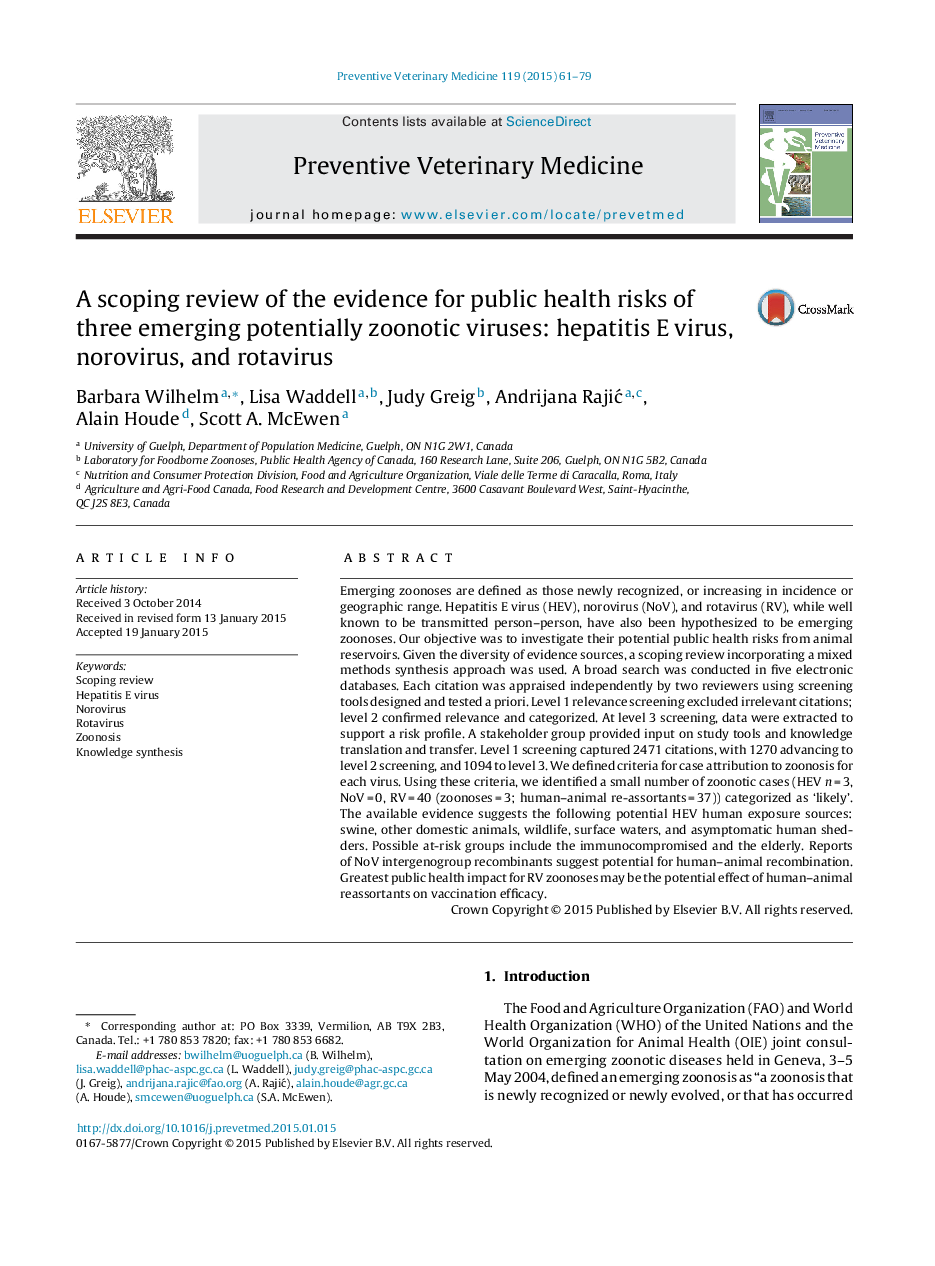| Article ID | Journal | Published Year | Pages | File Type |
|---|---|---|---|---|
| 2452412 | Preventive Veterinary Medicine | 2015 | 19 Pages |
•Two epidemiologists each independently extracted data from 1094 relevant studies.•Few case reports (HEV n = 3, NoV = 0, RV = 40) were categorized as ‘likely’ zoonoses.•NoV zoonosis is a hypothetical possibility, thus far not reported.•HEV zoonosis is likely of greatest risk to immuno-compromised and elderly patients.•RV zoonosis may have greatest public health impact on vaccine effectiveness.
Emerging zoonoses are defined as those newly recognized, or increasing in incidence or geographic range. Hepatitis E virus (HEV), norovirus (NoV), and rotavirus (RV), while well known to be transmitted person–person, have also been hypothesized to be emerging zoonoses. Our objective was to investigate their potential public health risks from animal reservoirs. Given the diversity of evidence sources, a scoping review incorporating a mixed methods synthesis approach was used. A broad search was conducted in five electronic databases. Each citation was appraised independently by two reviewers using screening tools designed and tested a priori. Level 1 relevance screening excluded irrelevant citations; level 2 confirmed relevance and categorized. At level 3 screening, data were extracted to support a risk profile. A stakeholder group provided input on study tools and knowledge translation and transfer. Level 1 screening captured 2471 citations, with 1270 advancing to level 2 screening, and 1094 to level 3. We defined criteria for case attribution to zoonosis for each virus. Using these criteria, we identified a small number of zoonotic cases (HEV n = 3, NoV = 0, RV = 40 (zoonoses = 3; human–animal re-assortants = 37)) categorized as ‘likely’. The available evidence suggests the following potential HEV human exposure sources: swine, other domestic animals, wildlife, surface waters, and asymptomatic human shedders. Possible at-risk groups include the immunocompromised and the elderly. Reports of NoV intergenogroup recombinants suggest potential for human–animal recombination. Greatest public health impact for RV zoonoses may be the potential effect of human–animal reassortants on vaccination efficacy.
